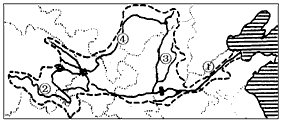In most aspects of medieval life, the closed corporation prevailed. But compared to modern life, the medieval urban family was a very open unit: for it included, as part of the normal household, not only relatives by blood but a group of industrial workers as well as domestics whose relation was that of secondary members of family. This held for all classes, for young men from the upper classes got their knowledge of the world by serving as waiting men in a noble family: what they observed and overheard at mealtime was part of their education. Apprentices lived as members of the master craftsman’s family. If marriage was perhaps deferred longer for men than today, the advantages of home life were not entirely lacking, even for the bachelor.
The workshop was a family; likewise the merchant’s counting house. The members ate together at the same table, worked in the same rooms, slept in the same or common hall, converted at night into dormitories, joined in the family prayers, participated in the common amusements.
The intimate unity of domesticity and labour dictated the major arrangement within the medieval dwelling-house itself. Houses were usually built in continuous rows around the perimeter of their gardens. Freestanding houses, unduly exposed to the elements, wasteful of the land on each side, harder to heat, were relatively scarce: even farmhouses would be part of a solid block that included the stables, barns and granaries. The materials for the houses came out of the local soil, and they varied with the region. Houses in the continuous row forming the closed perimeter of a block, with guarded access on the ground floor, served as a domestic wall: a genuine protection against felonious entry in troubled times.
The earliest houses would have small window openings, with shutters to keep out the weather; then later, permanent windows of oiled cloth, paper and eventually glass. In the fifteenth century, glass, hitherto so costly it was used only for public buildings, became more frequent, at first only in the upper part of the window. A typical sixteenth-century window would have been divided into three panels: the uppermost panel, fixed, would be of diamond-parted glass; the next two panels would have shutters that opened inwards; thus the amount of exposure to sunlight and air could be controlled, yet on inclement days, both sets of shutters could be closed, without altogether shutting out our light. On any consideration of hygiene and ventilation this type of window was superior to the all-glass window that succeeded it, since glass excludes the bactericidal ultra-violet rays.
Where could you have expected to find glass used in the fourteenth century
A. In small windows in private houses.
B. In buildings designed for public use.
C. Forming one part of a window protection.
D. Behind protective shutters.

